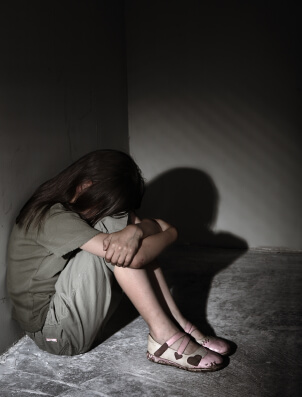In 2014 a huge tornado devastated a small town in Oklahoma, killing 24 people. Stories and images of the destruction were all over the Internet, the newspapers and television news. The coverage reminded me of when in early June, 1966, I walked among the ruins in Topeka, Kansas, after a tornado plowed through that city. As far as I could see in any direction, no home was left standing.
But as I considered the news of this recent tornado, I was aware that something else almost as horrible and shocking had also happened that day, and the media weren’t covering it. More than a dozen young people from age 10 to 24 had died senselessly that day – by suicide.
That story wasn’t being covered because the same thing happened the day before. And the same thing was going to happen the next day, and the day after that. More than a million young people attempt suicide every year in the U.S. So this is old, stale news. If the media tried to report all these awful tragedies they’d go out of business.
It’s the job of the Center for Disease Control (CDC) to track causes of death. According to their report, suicide is the third leading cause of death among teens. One out of every six teens considers suicide. One out of every 200 attempts actually succeed. That’s nearly 5,000 teenagers dead at their own hand in 2011 in the U.S. Teens aged 14 to 16 are more susceptible than older teens. More girls consider it than boys. More boys than girls actually follow through.
The trend has been getting worse in recent years. Experts cite bullying as a possible contributing cause. But there’s more to it than that.
Teens are more emotional than younger kids or adults. The reason is that the part of their brain that handles critical thinking, judgment and impulse control is “under construction.” So when they have adversity in their lives, they react emotionally, which makes it hard for them to understand the reasons for their hardships or to envision solutions. This can lead to depression and feelings of hopelessness.
When there is so much to learn, teens make mistakes related to almost everything, which can lead them to feel stupid or ashamed. This can aggravate feelings of low self-esteem at a time when they desperately want to be popular. Most kids that age aren’t sure who they are. They feel they aren’t attractive enough, smart enough, or popular enough. They may feel unloved.
And these days, The typical family is under a lot of pressure. Financial problems. Marital problems. Many parents are so busy trying to cope that they don’t connect well with their teenage child. Other parents neglect or abuse their kids – psychologically, physically, or even sexually.
Teenagers often find it hard to envision the future. They can feel trapped in what they perceive as a hurtful, meaningless situation. It’s not easy for them to think clearly about how to deal with their problems.
And many teenagers don’t have a realistic view of death. Movies and video games haven’t given them the realistic perspective that their life – their existence – will end once and for all, that death is permanent, truly the end. Suicide can seem like a way to express how they feel, a way to escape and make people feel sorry for causing them pain.
If you’re a parent, you’ve heard about teen suicide. But you’ve probably thought, This could never happen to my child. I hope you’re right. I hope you have good communication skills and you’ve been able to maintain the bond with your child. As a parent, I hope you exercise awareness, compassion, intuition, and patience. When your son or daughter acts depressed, I hope you don’t blow it off.
A million teen suicide attempts per year yields some pretty scary odds.
 Helping your child develop vital thinking skills can help them balance their emotions with insight and judgment. My new book: How Your Teen Can Grow a Smarter Brain.
Helping your child develop vital thinking skills can help them balance their emotions with insight and judgment. My new book: How Your Teen Can Grow a Smarter Brain.
You can grow the bond with your child through better listening. Download the FREE ebook, Listening to Understand.

